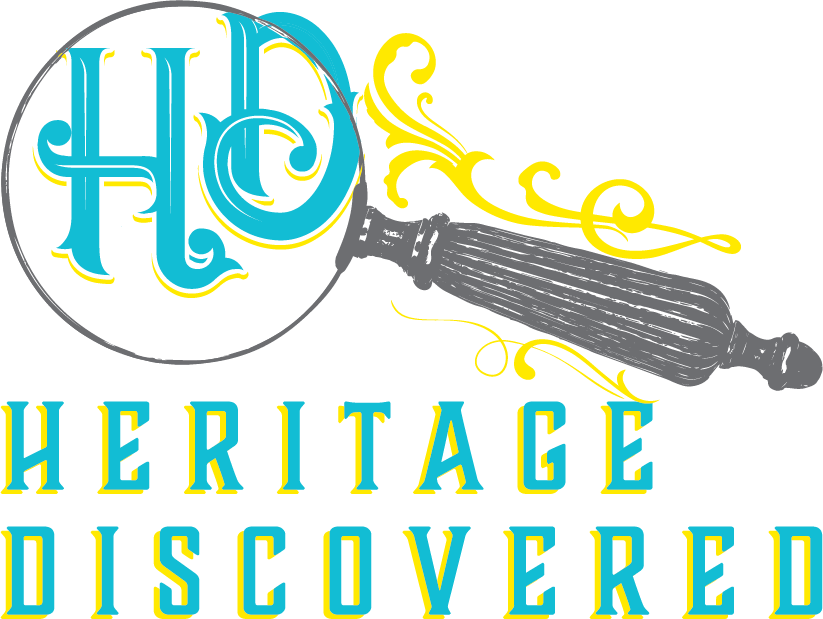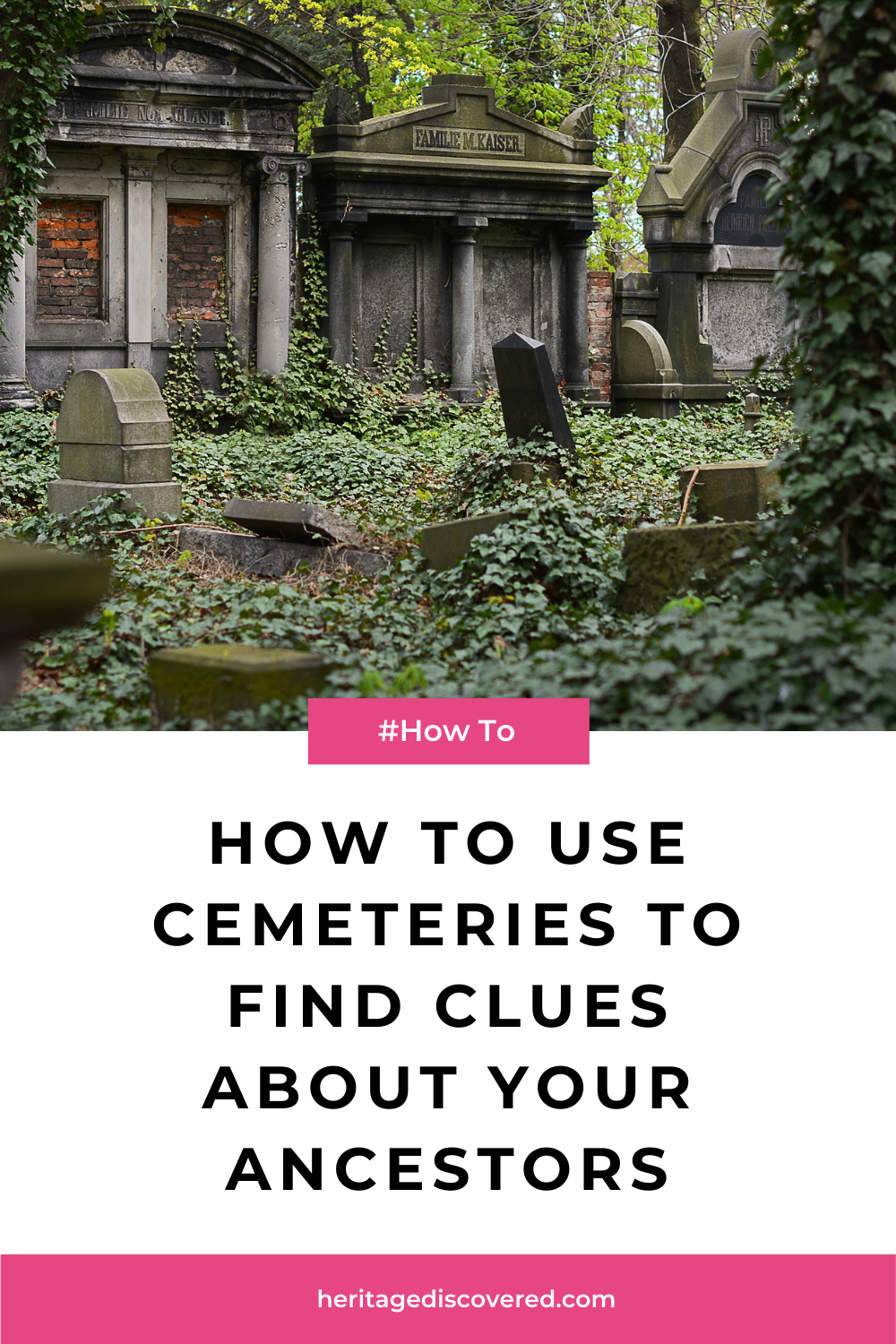How to Strengthen Your Cemetery Research Skills to Find More Clues
*This post may have affiliate links, which means I may receive commissions if you choose to purchase through links I provide (at no extra cost to you). All opinions remain my own.
Cemetery research is an essential part of genealogy research.
Oftentimes, we focus on looking for more paper records to learn more about our family, like who their parents were and where they were born. But a lot can be learned from genealogy research in cemeteries, too.
In fact, cemetery research can be a substitute when you can’t find more concrete information things like death records.
In this article, I’m sharing general tips for cemetery research for genealogy, clues you can find in the cemetery, and how to use those clues to further your family tree.
General tips for visiting your ancestor’s cemetery
Going to the cemetery to see where your ancestors are buried can also be a moving experience, even if they lived generations ago.
A few years ago, I finally got to go where my dad’s parents are buried. They both died before I was born so I never got to meet them, but I still felt connected to them when I was able to visit their graves.
Beyond feeling a connection to our family members who have passed, both their grave and the cemetery as a whole can be filled with hints that you may not already know or be able to find elsewhere.
Here are a few general tips for visiting an ancestor’s resting place:
1) Find everyone in the cemetery with the surname you’re looking for before you go. You can use Find A Grave and other similar sites, or check with the cemetery’s office. Bring this with you on your visit.
Depending on how common your surname was in the area, some or all of these people could be close or extended family.
2) Take pictures of everything. When you visit a gravesite, don’t only take pictures of the graves of relatives’ that you know are buried there and leave.
Take the time to photograph the graves around your ancestors. They may be relatives, even if the last names are different.
Also, be sure to take photos of everyone with the surname you’re researching that you previously found.
3) Write down all the information on the headstone. Later on, that stone may become unreadable or damaged beyond repair. You want to get the details while you still can.
Don’t stop there. Copy the inscriptions from the surrounding graves and the ones with your goal surname.
4) Use a cemetery research checklist to make sure you don’t miss a single hint when you have the opportunity to visit your ancestors’ resting places.
I made a mistake and didn’t do these steps a few years ago when I was on a genealogy road trip, visiting a cemetery where many of my ancestors were.
I later learned that I’m related to more people there than I realized and missed the chance to get the information. Now I have to rely on the kindness of strangers on Find A Grave to get pictures.
Don’t miss the chance to take photos and record all the nearby people and their information. You never know when you may need it.
Related posts:
How To Effortlessly Analyze Old Obituaries And Verify Their Clues
How to Interpret Gravestone Symbols and Their Meanings
How to Find and Use Hidden Clues in Obituaries
Why Decode the Mysterious Numbers on Death Certificates
Clues you can find when doing genealogy research in cemeteries
There can be lots of clues to find in cemeteries, if you know what to look for, especially on gravestones.
Here are 9 of the most common types of hints to look for:
1) Birth and death dates. Of course, they may not be true, but most tombstones will have birth and death dates. Even if they’re not accurate, it still gives you a narrower timeframe to do further research in.
2) Maiden names. Sometimes you can score and find a woman’s maiden name on her gravestone. Since finding maiden names can be hard, headstones are another resource you can add to your toolbox.
3) Parents. This marker gives not only Sevila’s maiden name but also her parents’ names.
4) Children. Family plots could lead you to find more children you didn’t know about because they were born and died between census years.
5) Military service. Military service was often included for veterans. A grave could note a company and regiment someone served in.
I have a Jones branch in my family. Needless to say, researching them is hard. Four of the sons served in the Civil War, but I lost track of a couple of them after the war. One was Charles D. Jones from Vermont, who I knew married Dora Phelan. After casting a wide search net, I came across a Find A Grave memorial for a Charles D. Jones buried in Massachusetts. Both his wife’s name and the regiment matched, confirming I had the right Charles Jones and giving me the year of his death.
6) Occupation. A gravestone might include a job like Deacon, Reverend, M.D., or Esq. Symbols could also point to an occupation.
7) Fraternal organization membership. Grave markers can also point to what clubs your ancestor may have been in, like the Freemasons.
Symbols for organizations like the Knights of Columbus, the Grand Army of the Republic, and others can also be found.
8) Hometowns. On most records, immigrants usually only said what country they were from. If you’re lucky, they might name a county or province. Only one of my Irish ancestors said what county they were from on a document. The rest only said they were from Ireland.
This marker for Thomas Slattery, my 1st cousin 4 times removed, says he was from the parish of Gambonsfield, County Tipperary. From here, I was able to find a couple of baptisms in Ireland and confirmed where they were from.
Photo from my personal collection
9) Religion. Symbols can point to religion - Methodist, Jewish, Russian Orthodox, Buddhist, and more.
Related posts:
5 Things to Look For in Probate Records to Help Trace Your Ancestors
How Probate Records Can Help You Find Your Female Ancestors
How To Trace Women In Your Family Tree With Veterans’ Pension Records
11 Smart Tips For Using Archives In Your Genealogy Research
What to do with the clues you find on gravestones
Once you track down the cemetery, the grave sites, and record everything, the next step is to break down each clue into steps to research and verify.
This will also lead you to more records you can use to grow your family history.
Remember, just because it’s on the headstone doesn’t mean it’s accurate. One of my ancestor’s brothers has a headstone that says he died in 1899, but I found him in the 1900 census and his probate records also say he died in 1900. You want to double-check the dates and any other information to be sure it’s true.
For example, if you find a Civil War regiment, you can look for military records like Civil War pension records.
If you find any symbols, you can research them to see what they mean.
Using the date on the marker, search for cemetery and funeral homes records and obituaries.
If parents or children are named, look for those vital records. If you didn’t already know the parents, you can then look for census records and siblings.
Related posts:
11 Smart Strategies For Searching For Ancestors Who Changed Their Name
How to Organize Your Genealogy Files With Binders
How To Avoid A Brick Wall And Research Your Ancestors With Common Names
6 Common Genealogy Mistakes And How To Avoid Them
What to do if you can’t read a gravestone
At some point, you’ll likely come across a gravestone that is too eroded or damaged to read.
Common tricks in the past used to be to use shaving cream to make the carving easier to read, or to take grave rubbings. Unfortunately, both of these methods damage them even more and should be avoided.
Similarly, don’t use chalk or flour to try to read a stone. Flour can cause microorganisms to grow in the stone.
Instead, try using aluminum foil, which is much gentler. Or, a mirror to refract sunlight onto the stone and highlight the carving
If this post was helpful, please consider “buying me a coffee”. Tips through Ko-Fi help me create more content like this for you! Thank you for supporting my small business!
Final thoughts
Researching in cemeteries is a great way to learn not only about the ancestor’s you know about, but to discover new relatives and extended family. There are many clues you can find in a graveyard that you can use to lead you to more records, and more stories.
Cemetery research can be a great substitute when sources like death records don’t exist.
But finding the clues is only part of the process. After your visit, be sure to research and verify each clue on them.


